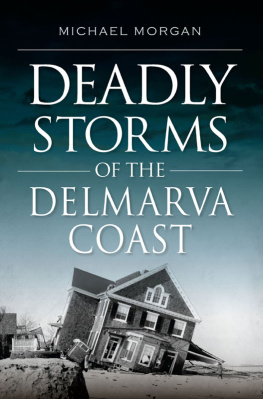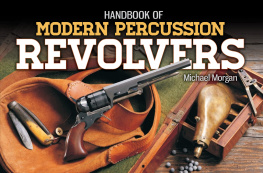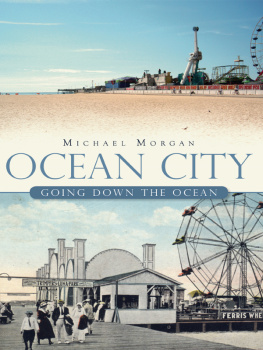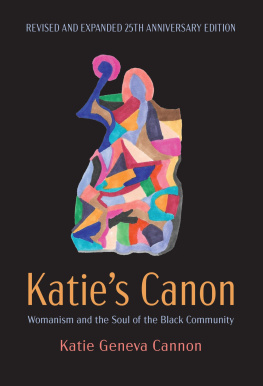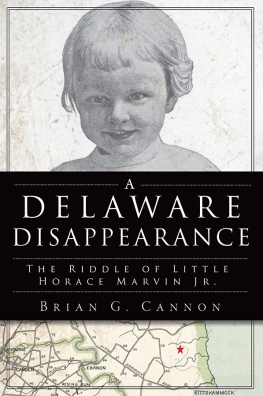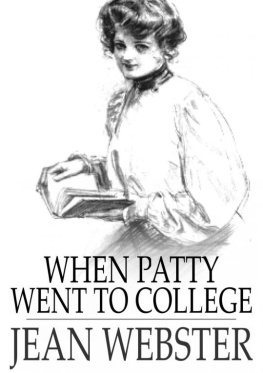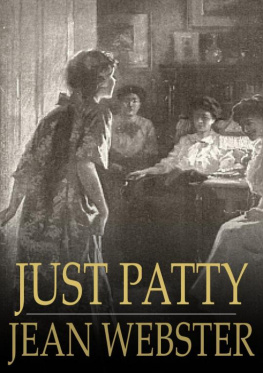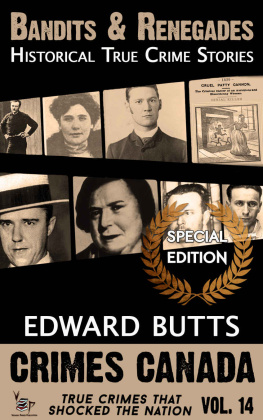Published by The History Press
Charleston, SC 29403
www.historypress.net
Copyright 2015 by Michael Morgan
All rights reserved
First published 2015
e-book edition 2015
ISBN 978.1.62585.341.7
Library of Congress Control Number: 2015935125
print edition ISBN 978.1.62619.812.8
Notice: The information in this book is true and complete to the best of our knowledge. It is offered without guarantee on the part of the author or The History Press. The author and The History Press disclaim all liability in connection with the use of this book.
All rights reserved. No part of this book may be reproduced or transmitted in any form whatsoever without prior written permission from the publisher except in the case of brief quotations embodied in critical articles and reviews.
Preface
When my editor, Hannah Cassilly, at The History Press first suggested Patty Cannon as a topic, I was hesitant. As any longtime resident of Maryland and Delaware knows, the crimes of Patty Cannon are legendary, and I was concerned that her criminal actions, like legends of pirates buried treasure, had increased as the tales were passed down over the generations. In addition, knowing that criminals were not apt to publicize their actions, I believed that it would be difficult to find contemporary documentation of her activities. I was wrong on both counts. Pattys heinous crimes equalif not surpassthe legends, and her robberies, kidnappings and murders were reported in newspapers, books, diaries and court documents as they happened. This book is a result of the distillation of the early nineteenth-century records that reveal the reality of the crimes of Patty Cannon before the legend had a chance to grow.
The crimes of Patty Cannon are documented in numerous libraries, archives and museums, and it would not have been possible to write this book without the assistance of the dedicated people who staff these institutions, including the Laurel Public Library and the Talbot County Free Library in Easton. In particular, I would like to thank Jim Blackwell of the Seaford Historical Society for answering my many questions and allowing me to photograph the Patty Cannon display in the societys museum. I also would like to thank the staff of the Delaware Public Archives for their help in locating documents pertinent to Pattys criminal career. Randy L. Goss, coordinator of accessing and processing/photo archivist/preservation officer at the archives, was instrumental in providing many of the images in this book. I would also like to thank my son, Tom, and his wife, Karla, for their support and technical assistance. Finally, I would like to thank my wife, Madelyn, for her constant editorial advice and support. She read every word in this book numerous times and spent countless hours correcting my spelling, punctuation and grammar. Without her help and support, this book would not have been possible.
The Delmarva Peninsula where Patty Cannon and her cohort of cutthroats robbed, kidnapped and murdered in the early nineteenth century. Courtesy of the Delaware Public Archives.
Chapter 1
A Criminals World
DRESSED IN MENS ATTIRE
Tall, dark and flirty, Patty Cannon captivated her guests, a slave trader named Ridgell and his traveling companion, as she poured another hot apple toddy. The two had stopped at Cannons house, and Patty, a woman with long dark hair, invited Ridgell to discuss business, be served strong drinks and talk about other things. Ridgell had money to buy slaves, and Patty said that she had a slave to sellbut enough of that. The slave was not here at the moment, so she invited her guests to have another drink. Before long, the sun was setting, and Ridgell allowed that he must be going. Perhaps they could meet in Laurel to complete the transaction. With that, the slave trader and his companion boarded their carriage and started down the road to Laurel.
The moment the carriage left the Cannon house, Patty; her son-in-law, Harry Brereton (a notorious kidnapper from Lewes); and two brothers with checkered pasts, John and Jesse Griffith, knew what they needed to do. Patty changed her dress to mens clothing. The men and Patty donned dark greatcoats and tall hats and armed themselves with muskets and other weapons. Horses were brought from the stables, and the four riders headed for Laurel, an island in a dark sea of forest.
In the second decade of the nineteenth century, Laurel, the principal town in western Sussex County, was home to three hundred souls, several taverns, a few mills and a couple shipyards. Situated on Broad Creek (an eastern branch of the Nanticoke River), Laurel was tucked away in the interior of the Delmarva Peninsula, isolated from much of the outside world, including the War of 1812 that was raging between the United States and Great Britain. Ridgell and his companion could expect to find reasonable accommodations in Laurel, if they reached the town.
This mid-nineteenth-century map shows the Nanticoke River (running diagonally across the left side of the map), Cannons Ferry (left center) and Laurel (bottom center). Johnsons Crossroads and Patty Cannons house were in the blank area on the left of the map. Courtesy of the Delaware Public Archives.
As the carriage bumped along the gloomy trail, the Nanticoke River, broad and deep, loomed several miles ahead. The four shadowy thugs on horseback knew that the carriage would cross the river at Cannons Ferry and that it would take time for the ferryman to be called, the carriage loaded on the scowl and the ferry to be muscled across the waterway. If the four riders were quick, they could cross the river at Hoopers Landing (Seaford), at the head of navigation, and scamper through the woods to set their ambush. Ridgell had ready cash, and the four hoodlums of the forest meant to get it.
A modern view of the Nanticoke River and Cannons Ferry (now known as Woodland Ferry) looking north toward Seaford. Johnsons Crossroads and Patty Cannons House were several miles to the left of the picture. Courtesy of the Delaware Public Archives.
A sturdy woman, Patty was said to be fond of music and dancing and as strong as most men, but she was all feminine charm and wit a short time earlier when Ridgell and his companion were in her home. Situated on the border between Delaware and Maryland, northwest of Seaford, Pattys house often hosted travelers in that sparsely settled part of Delmarva. Patty had no qualms about entertaining the two slave traders, some of the least-esteemed people in the early nineteenth century. Although slavery was legal in Delaware, some looked with contempt on those who bought and sold humans for a living. Knowing that the traders carried cash to expedite their purchases, Patty had gladly made flirty small talk over glasses of wine and apple toddies. After the last glass was emptied, the traders bid their adieu, mounted their carriage and started down the road toward Laurel, taking the most direct route that bypassed Seaford and would cross the Nanticoke at Cannons Ferry.


